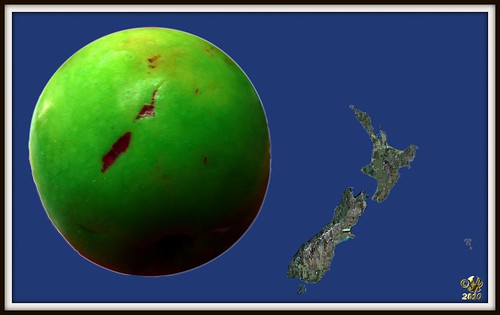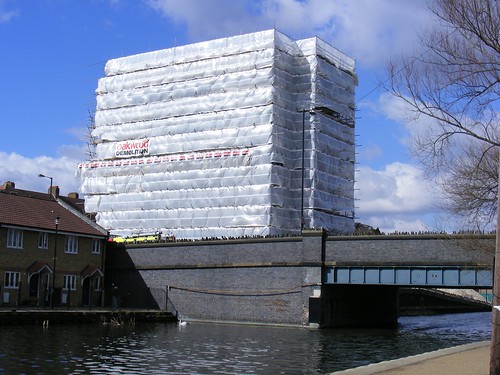I've put together a few references to content as this story has unfolded since January 2012. I suspect that updating this page is going to be an ongoing process.
Nothing to hide over Dotcom donation, Banks says - 29 April 2012
Nothing to hide over Dotcom donation, Banks says - 29 April 2012
ACT leader John Banks says he has nothing to hide over donations to his 2010 mayoral campaign. He said he welcomed an inquiry as questions swirl around what he knew about an alleged $50,000 donation from billionaire German Kim Dotcom. An official complaint will be lodged over claims by the Dotcom camp that they made a $50,000 donation that was later declared as anonymous, despite discussing it with Banks. When asked repeatedly if he knew that Dotcom had given him $50,000, Banks refused to answer.
Read full story
Dotcom's secret donation to Banks - 28 April 2012
Act leader John Banks asked for a $50,000 political donation to be split into two parts so it could be made anonymously, says Kim Dotcom and one other witness. Dotcom said the request was made on April 15, 2010, when Mr Banks was preparing to campaign for the Auckland mayoralty. He said there were at times three other people in the room while the donation was discussed - and Mr Banks rang later to thank him for it.
Megaupload data negotiations set to begin - 26 April 2012
The negotiations between Dotcom and six other associates are due to begin in a Virginia District Court as to the future of the 25 petabytes of data which is being held by hosting firm Carpathia.
Read full story
Dotcom trial may not occur - Judge - 21 April 2012
The criminal charges against Kim Dotcom in the United States may never get to trial, the judge overseeing the case has told the FBI after being told Dotcom's file-sharing company had never been formally served with criminal papers by the US.
Read full story
Megaupload: Erasing our servers as the US wants would deny us a fair trial - 7 April 2012
On Friday, Megaupload asked the Virginia judge overseeing its criminal copyright case to spare the data on its servers from deletion. Megaupload had leased 1,103 servers holding 25 petabytes of data from Carpathia Hosting, but it was unable to continue paying its bills after the government froze its assets.
Read full story
Kim Dotcom's seized cars to be sold off - 4 April 2012
Cars seized following the January police raid against Megaupload founder Kim Dotcom’s rented Auckland mansion are to be sold off.
Read full story
Dotcom allowed back on the net - 2 April 2012
Judge David Harvey grants Kim Dotcom access to the internet, a 90-minute swim each day and two trips of four hours each a week to the studio. Crown lawyers, appearing for the US Department of Justice, expressed "a level of scepticism about the success'' of such a recording.
Read full story
Dotcom seeks bail order changes - 2 April 2012
Megaupload founder Kim Dotcom was back in court today seeking changes to his bail conditions that would allow him access to the internet, a swimming pool and a recording studio to finish his album. Crown lawyers are okay with first two requests but have concerns about the third.
Read full story
Dotcom set to fight for online access - 1 April 2012
Kim Dotcom is going back to court in a bid for access to the internet. In a challenge to bail conditions, Dotcom will tomorrow argue he needs email access to properly prepare his defence.
Read full story
Megaupload User Demands Return of Seized Content - 31 March 2012
Ohio man Kyle Goodwin wants U.S. District Judge Liam O’Grady, the judge overseeing the Megaupload prosecution, to order the preservation of the 25 petabytes of data the authorities seized in January.
Read full story
US accused of hampering Dotcom case - 30 March 2012
Megaupload lawyer Ira Rothken has accused the United States government of impeding the defence of copyright-accused Kim Dotcom by refusing to release frozen funds needed to gather defence evidence. A spokesman for the US Attorney for the Eastern District of Virginia, where the MegaUpload indictment was issued, suggested to CNet in an e-mail that the office didn't consider Rothken's requests reasonable.
Read full story
Hollywood studios line up to kick Kim Dotcom - 28 March 2012
Rights owners Microhits and Valcom launch civil copyright lawsuits against Megaupload
Read full story
Hollywood studios plan to sue internet users - 28 March 2012
Hollywood studios have signalled a global intent to sue those who contributed to putting copyrighted movies on Kim Dotcom's Megaupload website.
Read full story
Kim Dotcom's $60k allowance - 22 March 2012
Alleged internet pirate Kim Dotcom has been given $60,000 a month to live on while he battles extradition to the United States.
Read full story
New blog post - a Mega Conspiracy unveiled - 15 March 2012
It has been a couple of months since police swooped on Megaupload founder and alleged "Mega Conspiracy" member Kim Dotcom and his buddies in a sleepy suburb north of Auckland. The case has created media frenzy in New Zealand and it seems that every few days there has been some further development in this case.
Read full story
Megaupload criminal copyright case is 'fundamental shift' - 15 March 2012
Megaupload caused other file sharing sites to clean up acts and business to look at cloud risk management
Read full story
Dotcom: Immigration NZ unaware of Hong Kong court action - 14 March 2012
German millionaire Kim Dotcom was aware of pending court action against him in Hong Kong when he lodged his application to be a New Zealand resident, but Hong Kong law gagged him from telling Immigration New Zealand, official documents show. New Zealand Government investigating inconsistency between tests for residency and for purchase of sensitive land
Read full story
Papers reveal Dotcom's ultimatum to NZ officials - 14 March 2012
Dotcom's immigration agent, David Cooper, described him in application papers as a billionaire, a term immigration officials repeated in their own assessments. Cooper told AP that the description came from Dotcom himself. But subsequent asset seizures indicate Dotcom's wealth to be far less than $1 billion.
Read full story
Hollywood visitor quizzed on Dotcom - 11 March 2012
A Hollywood documentary maker says he was detained by Customs for more than an hour to be searched and quizzed after putting Kim Dotcom's address on his arrival card. He was carrying a "Free Kim Dotcom" shirt.
Read full story
New details of Kim Dotcom's convictions - 9 March 2012
German multi-millionaire Kim Dotcom was reportedly convicted of eight share trading offences in Hong Kong after being granted residency in New Zealand.
Read full story
Extradition request lodged for Kim Dotcom - 5 March 2012
The United States government has formally lodged a request to extradite alleged copyright pirate Kim Dotcom from New Zealand, a lawyer representing the US says.
Read full story
Prosecutors refuse to release Megaupload data - 2 March 2012
Folllowing Megaupload founder Kim Dotcom's successful defence against the latest US attempt to deny him bail on Tuesday before an extradition hearing in August, the focus of the case is likely to move to seized assets and data.
Read full story
New blog post - Megathis and megathat - 6 February 2012
It has been a few weeks since police swooped on "Mega Conspiracy" member Kim Dotcom and his buddies in a sleepy suburb north of Auckland. Since then we've seen the media chasing a story, and the politicians chasing the media.
Read full story
Megaupload attempting to get back online - 21 January 2012
Police arrested Kim Dotcom in an early morning swoop yesterday at his $30 million rented mansion in Coatesville, 30km north of Auckland. Dotcom and three others - Finn Batato, 38, and chief technical officer and co-founder Mathias Ortmann, 40, both from Germany, and Dutch national Bram van der Kolk, 29 - appeared in the North Shore District Court yesterday.
Read full story
Read full story
Dotcom's secret donation to Banks - 28 April 2012
Act leader John Banks asked for a $50,000 political donation to be split into two parts so it could be made anonymously, says Kim Dotcom and one other witness. Dotcom said the request was made on April 15, 2010, when Mr Banks was preparing to campaign for the Auckland mayoralty. He said there were at times three other people in the room while the donation was discussed - and Mr Banks rang later to thank him for it.
Megaupload data negotiations set to begin - 26 April 2012
The negotiations between Dotcom and six other associates are due to begin in a Virginia District Court as to the future of the 25 petabytes of data which is being held by hosting firm Carpathia.
Read full story
Dotcom trial may not occur - Judge - 21 April 2012
The criminal charges against Kim Dotcom in the United States may never get to trial, the judge overseeing the case has told the FBI after being told Dotcom's file-sharing company had never been formally served with criminal papers by the US.
Read full story
Megaupload: Erasing our servers as the US wants would deny us a fair trial - 7 April 2012
On Friday, Megaupload asked the Virginia judge overseeing its criminal copyright case to spare the data on its servers from deletion. Megaupload had leased 1,103 servers holding 25 petabytes of data from Carpathia Hosting, but it was unable to continue paying its bills after the government froze its assets.
Megaupload lawyer says case could affect other storage services - 5 April 2012
A verdict against Megaupload in the US would mean other cloud storage providers can be held criminally liable for illegal content stored by customers on their networks, a lawyer representing the shuttered file-sharing site said.Read full story
Kim Dotcom's seized cars to be sold off - 4 April 2012
Cars seized following the January police raid against Megaupload founder Kim Dotcom’s rented Auckland mansion are to be sold off.
Read full story
Dotcom allowed back on the net - 2 April 2012
Judge David Harvey grants Kim Dotcom access to the internet, a 90-minute swim each day and two trips of four hours each a week to the studio. Crown lawyers, appearing for the US Department of Justice, expressed "a level of scepticism about the success'' of such a recording.
Read full story
Dotcom seeks bail order changes - 2 April 2012
Megaupload founder Kim Dotcom was back in court today seeking changes to his bail conditions that would allow him access to the internet, a swimming pool and a recording studio to finish his album. Crown lawyers are okay with first two requests but have concerns about the third.
Read full story
Dotcom set to fight for online access - 1 April 2012
Kim Dotcom is going back to court in a bid for access to the internet. In a challenge to bail conditions, Dotcom will tomorrow argue he needs email access to properly prepare his defence.
Read full story
Megaupload User Demands Return of Seized Content - 31 March 2012
Ohio man Kyle Goodwin wants U.S. District Judge Liam O’Grady, the judge overseeing the Megaupload prosecution, to order the preservation of the 25 petabytes of data the authorities seized in January.
Read full story
US accused of hampering Dotcom case - 30 March 2012
Megaupload lawyer Ira Rothken has accused the United States government of impeding the defence of copyright-accused Kim Dotcom by refusing to release frozen funds needed to gather defence evidence. A spokesman for the US Attorney for the Eastern District of Virginia, where the MegaUpload indictment was issued, suggested to CNet in an e-mail that the office didn't consider Rothken's requests reasonable.
Read full story
Hollywood studios line up to kick Kim Dotcom - 28 March 2012
Rights owners Microhits and Valcom launch civil copyright lawsuits against Megaupload
Read full story
Hollywood studios plan to sue internet users - 28 March 2012
Hollywood studios have signalled a global intent to sue those who contributed to putting copyrighted movies on Kim Dotcom's Megaupload website.
Read full story
Kim Dotcom's $60k allowance - 22 March 2012
Alleged internet pirate Kim Dotcom has been given $60,000 a month to live on while he battles extradition to the United States.
Read full story
New blog post - a Mega Conspiracy unveiled - 15 March 2012
It has been a couple of months since police swooped on Megaupload founder and alleged "Mega Conspiracy" member Kim Dotcom and his buddies in a sleepy suburb north of Auckland. The case has created media frenzy in New Zealand and it seems that every few days there has been some further development in this case.
Read full story
Megaupload criminal copyright case is 'fundamental shift' - 15 March 2012
Megaupload caused other file sharing sites to clean up acts and business to look at cloud risk management
Read full story
Dotcom: Immigration NZ unaware of Hong Kong court action - 14 March 2012
German millionaire Kim Dotcom was aware of pending court action against him in Hong Kong when he lodged his application to be a New Zealand resident, but Hong Kong law gagged him from telling Immigration New Zealand, official documents show. New Zealand Government investigating inconsistency between tests for residency and for purchase of sensitive land
Read full story
Papers reveal Dotcom's ultimatum to NZ officials - 14 March 2012
Dotcom's immigration agent, David Cooper, described him in application papers as a billionaire, a term immigration officials repeated in their own assessments. Cooper told AP that the description came from Dotcom himself. But subsequent asset seizures indicate Dotcom's wealth to be far less than $1 billion.
Read full story
Hollywood visitor quizzed on Dotcom - 11 March 2012
A Hollywood documentary maker says he was detained by Customs for more than an hour to be searched and quizzed after putting Kim Dotcom's address on his arrival card. He was carrying a "Free Kim Dotcom" shirt.
Read full story
New details of Kim Dotcom's convictions - 9 March 2012
German multi-millionaire Kim Dotcom was reportedly convicted of eight share trading offences in Hong Kong after being granted residency in New Zealand.
Read full story
Extradition request lodged for Kim Dotcom - 5 March 2012
The United States government has formally lodged a request to extradite alleged copyright pirate Kim Dotcom from New Zealand, a lawyer representing the US says.
Read full story
Prosecutors refuse to release Megaupload data - 2 March 2012
Folllowing Megaupload founder Kim Dotcom's successful defence against the latest US attempt to deny him bail on Tuesday before an extradition hearing in August, the focus of the case is likely to move to seized assets and data.
Read full story
New blog post - Megathis and megathat - 6 February 2012
It has been a few weeks since police swooped on "Mega Conspiracy" member Kim Dotcom and his buddies in a sleepy suburb north of Auckland. Since then we've seen the media chasing a story, and the politicians chasing the media.
Read full story
Megaupload attempting to get back online - 21 January 2012
Police arrested Kim Dotcom in an early morning swoop yesterday at his $30 million rented mansion in Coatesville, 30km north of Auckland. Dotcom and three others - Finn Batato, 38, and chief technical officer and co-founder Mathias Ortmann, 40, both from Germany, and Dutch national Bram van der Kolk, 29 - appeared in the North Shore District Court yesterday.
Read full story






